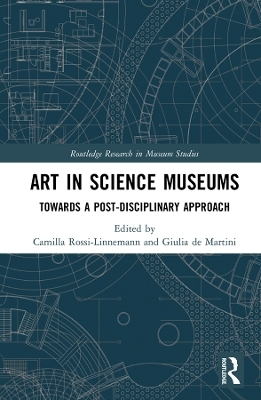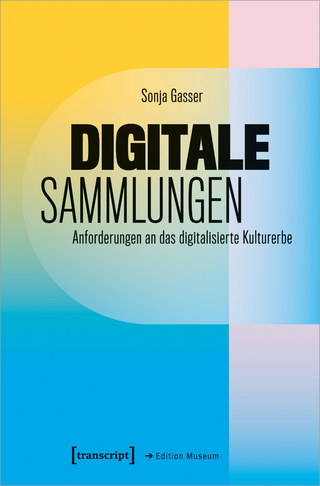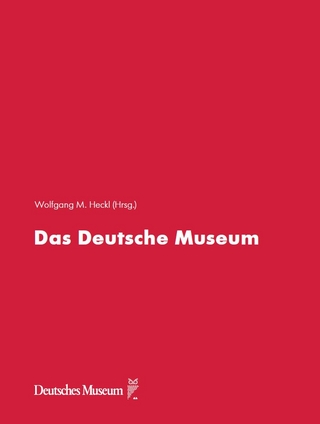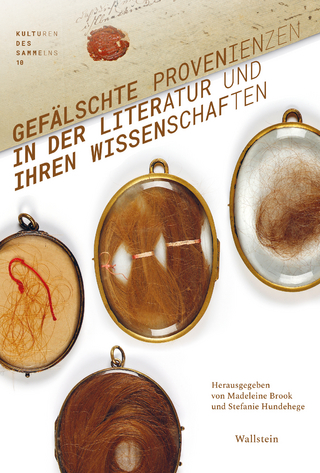
Art in Science Museums
Routledge (Verlag)
978-1-138-58952-0 (ISBN)
Presenting a balanced mix of theoretical perspectives, practitioners’ reflections, and case-studies, this volume gives voice to a wide range of professionals, from traditional science centres and museums, and from institutions born with the very aim of merging art and science practices. Considering the role of art in the field of science engagement, the book questions whether the arts might help curators to convey complex messages, foster a more open and personal approach to scientific issues, become tools of inclusion, and allow for the production of totally new cultural products. The book also includes a rich collection of projects from all over the world, synthetically presenting cases that reveal very different approaches to the inclusion of art in science programmes.
Art in Science Museums should be of great interest to academics, researchers and postgraduate students working in the fields of museum studies, cultural heritage management, material culture, science communication and contemporary art. It should also be essential reading for museum professionals looking to promote more reflective social science engagement in their institutions.
Camilla Rossi-Linnemann is currently International Partnership Coordinator at the National Museum of Science and Technology Leonardo da Vinci in Milan, where she focuses on international projects and collaborations for visitor engagement and cultural diplomacy, especially based on the interrelation between science, technology and art. Giulia de Martini is currently Head of Research at TheFabLab, a digital manufacturing laboratory, where she studies the impact of innovation in society and spreads awareness about the technological and human competences involved in the fourth industrial revolution, focusing on the connections between different fields of knowledge.
Introduction: the post-disciplinary museum; 1. Premise; 1.1 How art contributed to the public image of science; 1.2 Making meaning with Art, Science and Technology; 2. Art as a narrative tool: seeing the unseen; 2.1 A house of collaboration: investigating the intersections of art and biomedicine; 2.2 Sophia’s Whale and the Hypercubic Showcase of Sudden Comprehension; 2.3 In the Spirit of Enquiry; 2.4 Context, collaboration and contemporary culture; 2.5 Case studies; 3. Art for science education and enquiry: patterns of thinking; 3.1 The Exploratorium: Art as Inquiry; 3.2 Art Thinking; 3.3 Art as ingredient for meaningful science learning; 3.4 Answering the unasked questions; 3.5 Case studies; 4. Art, inclusion, controversy and imagination: from facts to values; 4.1 Criticality, Imagination and Interaction: A new basis for Art Science Curation; 4.2 Shifting meaning, shifting contracts – Biological arts and evolving museum ethics; 4.3 Decolonising natural history museums through contemporary art; 4.4 Case studies; Conclusions - The Post Disciplinary Museum
| Erscheinungsdatum | 10.12.2019 |
|---|---|
| Reihe/Serie | Routledge Research in Museum Studies |
| Zusatzinfo | 1 Line drawings, black and white; 24 Halftones, black and white; 25 Illustrations, black and white |
| Verlagsort | London |
| Sprache | englisch |
| Maße | 156 x 234 mm |
| Gewicht | 453 g |
| Themenwelt | Kunst / Musik / Theater |
| Reisen ► Reiseführer | |
| Schulbuch / Wörterbuch | |
| Geisteswissenschaften ► Geschichte ► Hilfswissenschaften | |
| Naturwissenschaften ► Biologie | |
| ISBN-10 | 1-138-58952-7 / 1138589527 |
| ISBN-13 | 978-1-138-58952-0 / 9781138589520 |
| Zustand | Neuware |
| Haben Sie eine Frage zum Produkt? |
aus dem Bereich


